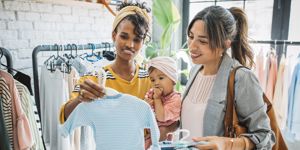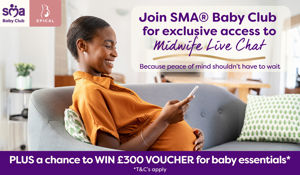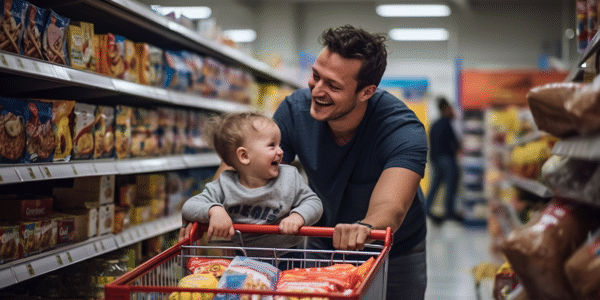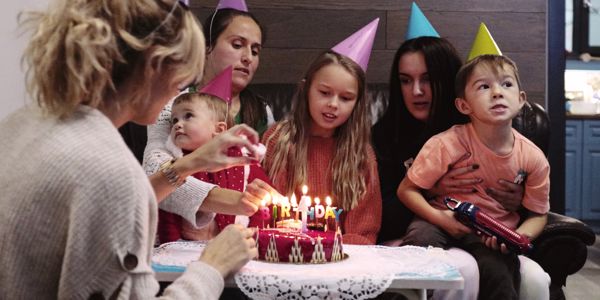Having a baby is both rewarding and fulfilling but it's also costly. Buying second-hand can help you source essentials such as car seats and baby monitors at a fraction of the cost or even for free.
However, experts warn that not all pre-loved items for little ones are safe and could even put them at risk.
To help give you the best advice on safely buying a wide range of second-hand baby products, we've spoken to Which? baby products expert Martha Roberts.
Buggies, Pushchairs and Travel Systems
Lots of parents opt to get their pushchair second-hand. If, like them, you're planning on a preloved buggy, pushchair or travel system, you'll need to know it's safe.
Check the product hasn't been involved in a product recall by searching online or contacting the manufacturer. Make sure the basics are working properly including the brakes, check there are no sharp edges or finger traps, plus look for a safety label confirming that it adheres to British Standard BS EN 1888:2019.
Follow our pushchair safety tips to avoid accidents and injuries, from potential hazards with wheels, brakes and harnesses, to babies overheating in buggies.
Cots and Nursery Furniture
Solid nursery furniture should be fine to use second-hand, especially if it's recently made and from a reputable retailer and manufacturer. But older furniture from before 1973 might be decorated with lead-based paint and, in the case of vintage cots, might not conform to current safety standards.
Remove old stickers and decorations from furniture as these could be a choking hazard, check there are no nails sticking out and make sure it conforms to British Safety Standards. It's BS EN 716 for cots and folding cots, BS EN 1130-1 for cribs and cradles BS 8509 for children's beds.
Stair Gates
These are usually fine to buy second-hand but to give yourself extra peace of mind, look for a sticker that tells you it conforms to BS EN 1930:2011 - the current safety standard.
Before you buy, check if there are any weak spots from it being roughly opened or bashed around by a determined toddler on a regular basis, and be prepared to source spare parts such as the correct length screws or sticky pads and wall cups to help fix them to the wall, if these are missing.
Baby Clothing
Whether it's hand-me-downs from friends and family or bargains found online or at a local car boot sale, preloved clothing is generally safe, but we'd advise checking the labels on nightwear. See if they say 'Keep away from fire' and 'Low flammability to BS 5722'. If they don't, they might not meet the latest standards.
Also check for choking hazards. These can include drawstrings and loose buttons - especially important on older clothes and home knitted items where safety standards don't necessarily apply.
Avoid novelty baby sleeping bags. Reject those with buttons, attachments or hoods or that look like a dressing-up item - a baby sleeping bag should be sleeveless with a neck that's neither too wide nor too narrow and with strong zips and fasteners.
Car Seats
Avoid second-hand car seats if possible as it’s not worth the risk to your child’s safety. A second-hand car seat may look like it's in good condition but deep inside it may tell another story. A hairline crack from an accident or even being dropped could be catastrophic if it's in a collision with your baby in it.
Additionally wear and tear may also affect safety, such as harness straps deteriorating from being scrubbed with strong chemicals, not to mention that the car seat might not comply with the latest child car seat laws.
Bicycle Helmets
In a similar way to car seats, a second-hand bike helmet may look perfectly fine from the outside but it may have internal damage - and this means it could fail if it's involved in an accident when your child is wearing it.
Buy new for your little one and make sure it adheres to the standard EN1080, which has a different chin strap design to the EN1078 standard for adults.
Cot Mattresses
Research from The Lullaby Trust charity suggests there's an increased risk of sudden infant death syndrome (SIDS) from using a second-hand mattress from outside the family home, so buying new is always best.
If you can't stretch to new, make sure the cot mattress lies firm and flat and fits snugly into the cot. It should have a protective waterproof cover and bear the British Standard label BS (British Standard) 1877-10:2011+A1:2012 and ideally BS 7177:1996 and BS EN 16890:2017 + A1:2021 as well.
Breast Pumps and Bottles
These are perfectly fine to use second-hand because it should be very easy to sanitise or even replace removable parts such as breast shields, valves, teats and bottles that have come into contact with breastmilk or breasts.
Sanitise them by boiling them for at least five minutes, microwaving them in a microwavable steriliser or sanitising bag, steaming them with an electric steam steriliser or using sterilising fluid or tablets.
Other parts that aren't so easy to deep-clean, such as the charging point or pump unit of an electric pump, can be wiped down with a cloth and antibacterial spray after each use.
Baby Monitors
Whether brand new or pre-owned, if it doesn't have proper security features your baby monitor could get hacked.
When buying second-hand, make sure to set up a new strong password and run software updates so that it has the latest security protections. You can also set it so that updates run automatically.
Don't forget to go into the default settings to activate all of the extra security features, including two-factor authentication if available.






